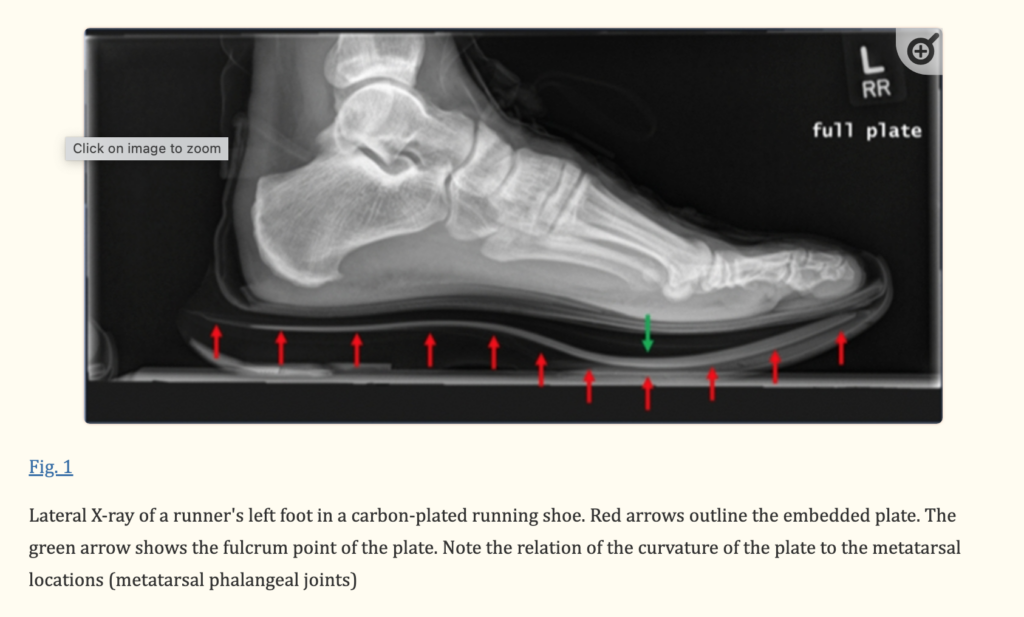Since 2019, marathon record books have been dramatically rewritten. The fastest 16 women and 19 of the 22 fastest men have all set their records in the past five years, thanks in no small part to the advent of “super shoes.” These high-tech racing shoes have revolutionized long-distance running, offering significant performance benefits from age group runners to elite athletes. Yet, as more runners lace up, there are growing concerns about the potential tradeoffs involved.
The Super Shoe Revolution
Super shoes are defined by their thick, hyper-responsive foam midsoles and curved carbon fiber plates. The foam in these shoes returns more energy than traditional EVA midsoles. The carbon fiber plate acts as a springboard, enhancing propulsion with each stride. The combination of these features results in a significantly improved running economy and speed. However, the same technologies that drive performance may also come with hidden costs.
The Impact of the Carbon Fiber Plate
At the heart of super shoes is the carbon fiber plate, known for its rigidity. This rigidity provides the powerful spring effect that propels runners forward. However, it also limits the mobility of the ankle joint. As Dr. Adam Tenforde has noted, this limitation changes the mechanics of the lower leg and foot, shifting stress away from the natural movement of the ankle and foot.

A key issue arises from the fact that the curvature of the carbon fiber plate does not always align with the curvature of an individual’s foot. Dr. Tenforde highlights that this misalignment can vary significantly between runners, potentially leading to uneven stress distribution.
In this article renowned podiatrist Dr. Amol Saxena comments, “The problem with the carbon-plated shoes is that your foot is individualized, and the carbon plate is not.” This mismatch can contribute to a range of lower leg injuries. Dr. Saxena notes increased risk of stress fractures, Achilles tendonitis, and plantar fasciitis, as the plate imposes additional stress on the metatarsals and navicular bones.
Stack Height and Stability Concerns
Another defining feature of super shoes is their high stack height, or the thickness of the midsole. This substantial cushioning provides an extremely comfortable feel and can aid in recovery by reducing muscle damage. However, the high stack height also affects stability. A taller sole can exacerbate any existing instability in the foot and lower leg. This may increase the risk of injury.
At ZAP, we have observed a notable rise in lower leg pain and injuries over recent years. While it’s challenging to directly attribute these issues to super shoes, the correlation with the timing of their widespread use is concerning. The increased cushion and improved recovery times are appealing. However, runners must weigh these benefits against potential instability.
The Risk of Weaker Muscles
One less discussed consequence of frequent use of super shoes is the potential weakening of the muscles and tendons. The carbon plate in these shoes takes on some of the propulsive load typically managed by the muscles. This might reduce their workload and strength over time. A decrease in running economy in the long term may result, as the muscles are less engaged during training. A tiny study highlighted in Outside Online by Alex Hutchinson gives a glimmer into the potential impacts on running economy.
Finding Balance
The tradeoff between the performance benefits of super shoes and the potential risk of injury is significant. While super shoes can enhance recovery and performance, they also carry risks that vary depending on individual biomechanics and foot structure.
To mitigate these risks, it is advisable not to train exclusively in super shoes. For most runners, incorporating a cushioned trainer without a carbon plate, which provides stability and reduces the risk of injury, is a prudent approach. If your weekly mileage exceeds 35 miles, it might be beneficial to use super shoes for some workouts, but limit their use to avoid overloading your feet and legs. The athletes on our professional team often wear super shoes for workouts and feel the recovery benefits are noticeable. However, we are beginning to use light weight trainers with responsive foam without a carbon fiber plate to mitigate the risk.
Strengthening the lower legs is also crucial for runners who use super shoes regularly. Exercises such as straight leg and bent leg calf raises, 4-way banded ankle exercises, and single-leg balance drills can help counteract the potential weakening effects of these shoes. Aim to incorporate these exercises up to 5-6 days a week.
Professional athletes often benefit from super shoes due to their high mileage and intense training schedules. However, even among elites, the rise in lower leg injuries has prompted a more selective approach to their use. The key is to balance the performance advantages with the potential risks, listening to your body and adjusting your training as needed.
Conclusion
Super shoes represent a major advancement in running technology, offering substantial performance benefits and enhanced recovery. However, the potential tradeoffs—including increased risk of injury and potential muscle weakening—should not be ignored. By understanding these risks and taking a balanced approach to training, runners can maximize the benefits of super shoes while minimizing potential downsides.
Interested in Learning more about ZAP’s 1-on-1 Coaching Services? Click Here.